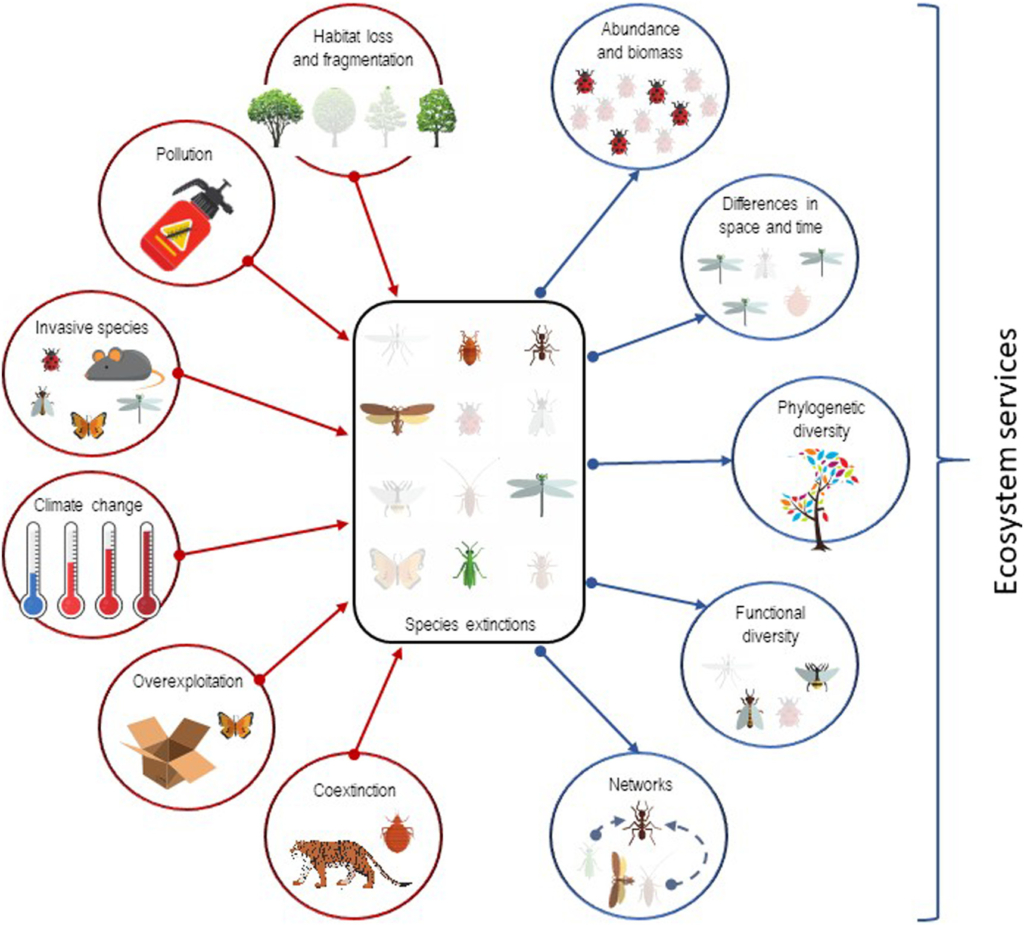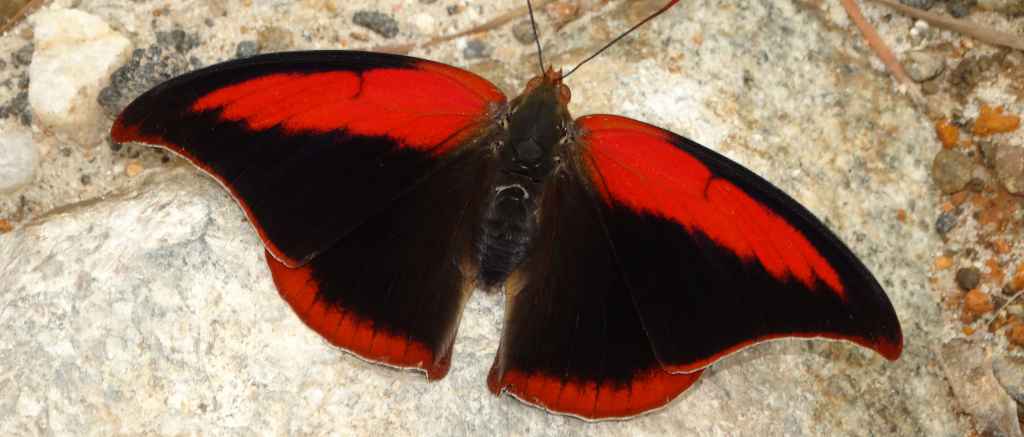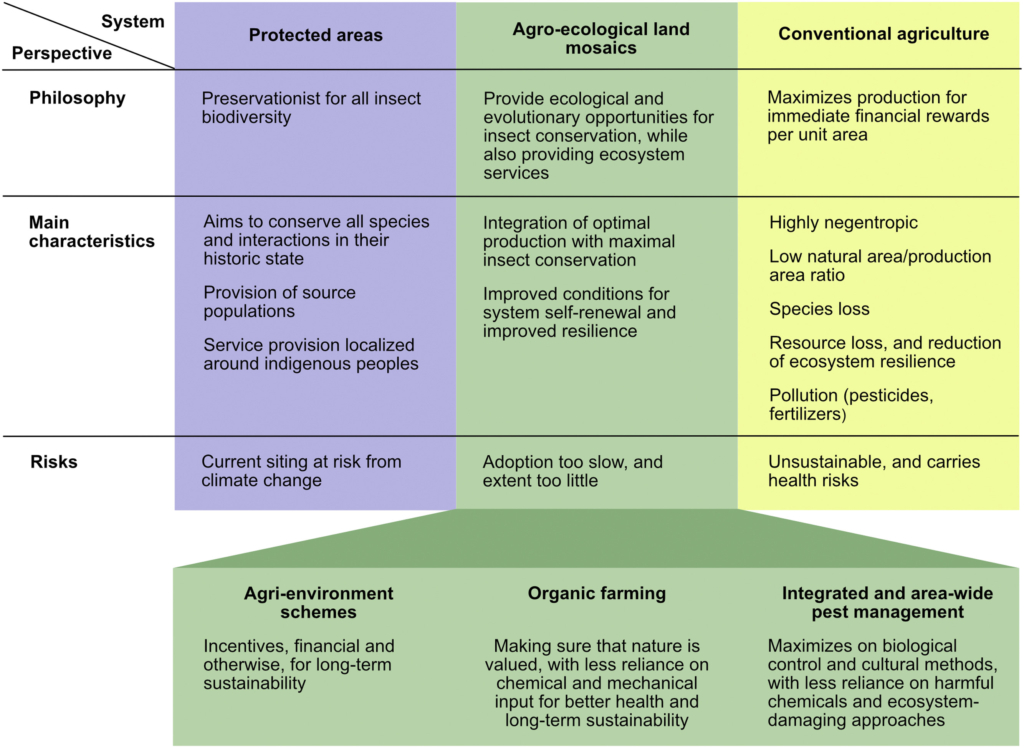Half-a-million insect species face extinction – Scientists warn humanity about worldwide insect decline – “The current insect extinction crisis is deeply worrying. Yet, what we know is only the tip of the iceberg.”

By Marlowe Hood
10 February 2020
(PhysOrg) – Half of the one million animal and plant species on Earth facing extinction are insects, and their disappearance could be catastrophic for humankind, scientists have said in a “warning to humanity”.
“The current insect extinction crisis is deeply worrying,” said Pedro Cardoso, a biologist at the Finnish Museum of Natural History and lead author of a review study published Monday.
“Yet, what we know is only the tip of the iceberg,” he told AFP.
The disappearance of bugs that fly, crawl, burrow, jump and walk on water is part of a gathering mass extinction event, only the sixth in the last half-billion years.

The last one was 66 million years ago, when an errant space rock wiped out land-based dinosaurs and most other life forms.
This time we are to blame.
“Human activity is responsible for almost all insect population declines and extinctions,” Cardoso told AFP.
The main drivers are dwindling and degraded habitat, followed by pollutants—especially insecticides—and invasive species. [more]
Half-a-million insect species face extinction: scientists
Scientists warn humanity about worldwide insect decline, and suggest ways to recognise and avert its consequences
By Pedro Cardoso
8 February 2020
(Luomus) – Insect declines and extinctions are accelerating in many parts of the world. With this comes the disappearance of irreplaceable services to humans, the consequences of which are unpredictable. A group of scientists from across the globe has united to warn humanity of such dangers [Scientists’ warning to humanity on insect extinctions].
Engaging civil society and policy makers is essential for the future and mutual well-being both of people and insects. In addition to mitigating climate change, an important aspect of the solution involves setting aside high-quality and manageable portions of land for conservation, and transforming global agricultural practices to promote species co-existence.

Humanity is pushing many ecosystems beyond recovery. As a consequence, unquantified and unquantifiable insect extinctions are happening every day. Two scientific papers by 30 experts from around the world discuss both the perils and ways to avoid further extinctions, intending to contribute towards a necessary change of attitude for humanity’s own sake.
“It is surprising how little we know about biodiversity at a global level, when only about 10 to 20 per cent of insect and other invertebrate species have been described and named. And of those with a name, we know little more than a brief morphological description, maybe a part of the genetic code and a single site where it was seen some time ago,” says Pedro Cardoso, from the Finnish Museum of Natural History, University of Helsinki, Finland.
The results of recently published works make it clear that the situation is dire
Habitat loss, pollution – including harmful agricultural practices, invasive species that do not encounter borders, climate change, overexploitation and extinction of dependent species all variably contribute to documented insect population declines and species extinctions.
“With species loss, we lose not only another piece of the complex puzzle that is our living world, but also biomass, essential for example to feed other animals in the living chain, unique genes and substances that might one day contribute to cure diseases, and ecosystem functions on which humanity depends,” confirms Cardoso.
The ecosystem functions he mentions include pollination, as most crops depend on insects to survive. Additionally, decomposition, as they contribute to nutrient cycling, as well as many other functions for which we have no technological or other replacement.
Practical solutions to mitigate insect apocalypse
The researchers also suggest possible practical solutions based on existing evidence gathered from around the world, which would help to avoid further insect population loss and species extinctions. These include actions such as setting aside high-quality and manageable portions of land for conservation, transforming global agricultural practices to promote species co-existence, and mitigating climate change.
Above all, communicating and engaging with civil society and policy makers is essential for the future and mutual well-being both of people and insects.
“While small groups of people can impact insect conservation locally, collective consciousness and a globally coordinated effort for species inventorying, monitoring and conservation is required for large-scale recovery” says Michael Samways, Distinguished Professor at Stellenbosch University, South Africa.
Ideas to help insects
- Avoid mowing your garden frequently; let nature grow and feed insects.
- Plant native plants; many insects need only these to survive.
- Avoid pesticides; go organic, at least for your own backyard.
- Leave old trees, stumps and dead leaves alone; they are home to countless species.
- Build an insect hotel with small horizontal holes that can become their nests.
- Reduce your carbon footprint; this affects insects as much as other organisms.
- Support and volunteer in conservation organizations.
- Do not import or release living animals or plants into the wild that could harm native species.
- Be more aware of tiny creatures; always look on the small side of life.
Articles:
Cardoso, P., Barton, P.S., Birkhofer, K., Chichorro, F., Deacon, C., Fartmann, T., Fukushima, C.S., Gaigher, R., Habel, J.C., Hallmann, C.A., Hill, M.J., Hochkirch, A., Kwak, M.L., Mammola, S., Noriega, J.A., Orfinger, A.B., Pedraza, F., Pryke, J.S., Roque, F.O., Settele, J., Simaika, J.P., Stork, N.E., Suhling, F., Vorster, C., Samways, M.J. (2020) Scientists’ warning to humanity on insect extinctions. Biological Conservation. DOI https://doi.org/10.1016/j.biocon.2020.108427
Samways, M.J., Barton, P.S., Birkhofer, K., Chichorro, F., Deacon, C., Fartmann, T., Fukushima, C.S., Gaigher, R., Habel, J.C., Hallmann, C.A., Hill, M.J., Hochkirch, A., Kwak, M.L., Maes, D., Mammola, S., Noriega, J.A., Orfinger, A.B., Pedraza, F., Pryke, J.S., Roque, F.O., Settele, J., Simaika, J.P., Stork, N.E., Suhling, F., Vorster, C. & Cardoso, P. (2020) Solutions for humanity on how to conserve insects. Biological Conservation. DOI https://doi.org/10.1016/j.biocon.2020.108426
The studies are published open access and can be downloaded by following the DOI links above.
Scientists’ warning to humanity on insect extinctions
ABSTRACT: Here we build on the manifesto ‘World Scientists’ Warning to Humanity, issued by the Alliance of World Scientists. As a group of conservation biologists deeply concerned about the decline of insect populations, we here review what we know about the drivers of insect extinctions, their consequences, and how extinctions can negatively impact humanity.
We are causing insect extinctions by driving habitat loss, degradation, and fragmentation, use of polluting and harmful substances, the spread of invasive species, global climate change, direct overexploitation, and co-extinction of species dependent on other species.
With insect extinctions, we lose much more than species. We lose abundance and biomass of insects, diversity across space and time with consequent homogenization, large parts of the tree of life, unique ecological functions and traits, and fundamental parts of extensive networks of biotic interactions. Such losses lead to the decline of key ecosystem services on which humanity depends. From pollination and decomposition, to being resources for new medicines, habitat quality indication and many others, insects provide essential and irreplaceable services. We appeal for urgent action to close key knowledge gaps and curb insect extinctions. An investment in research programs that generate local, regional and global strategies that counter this trend is essential. Solutions are available and implementable, but urgent action is needed now to match our intentions.

